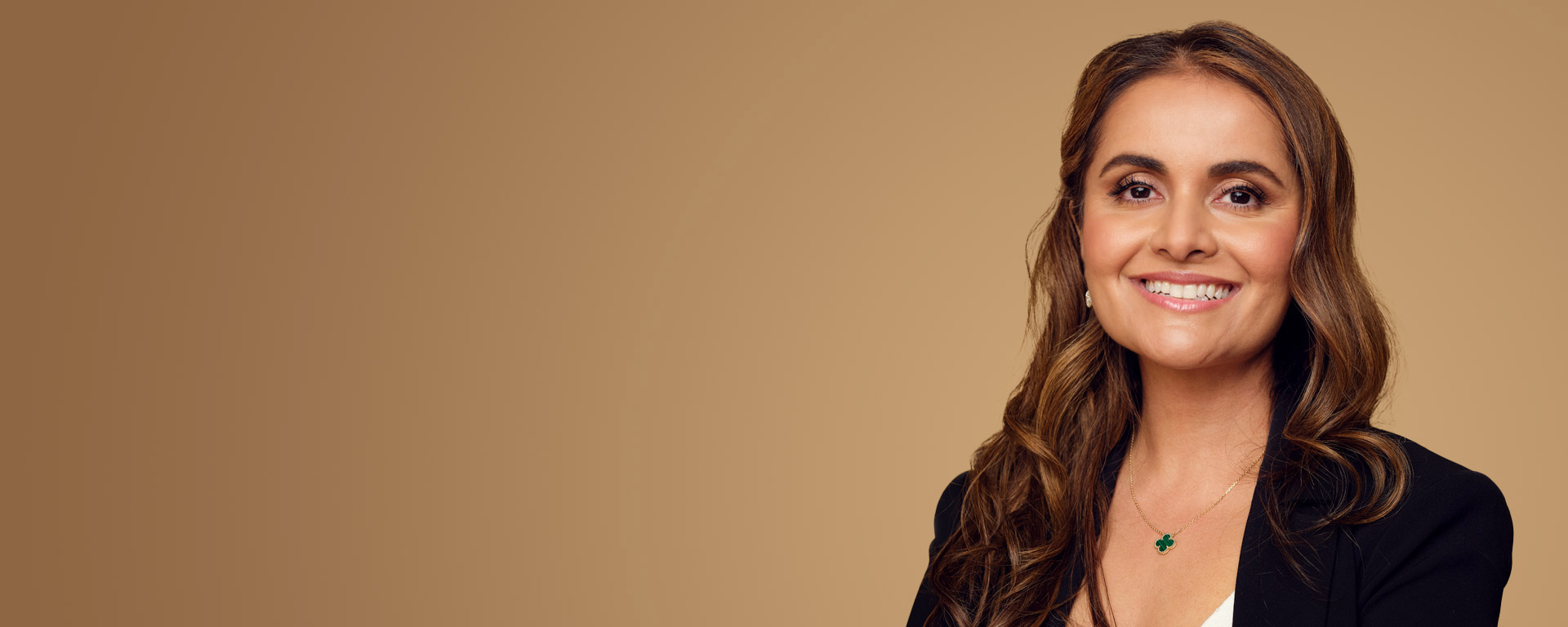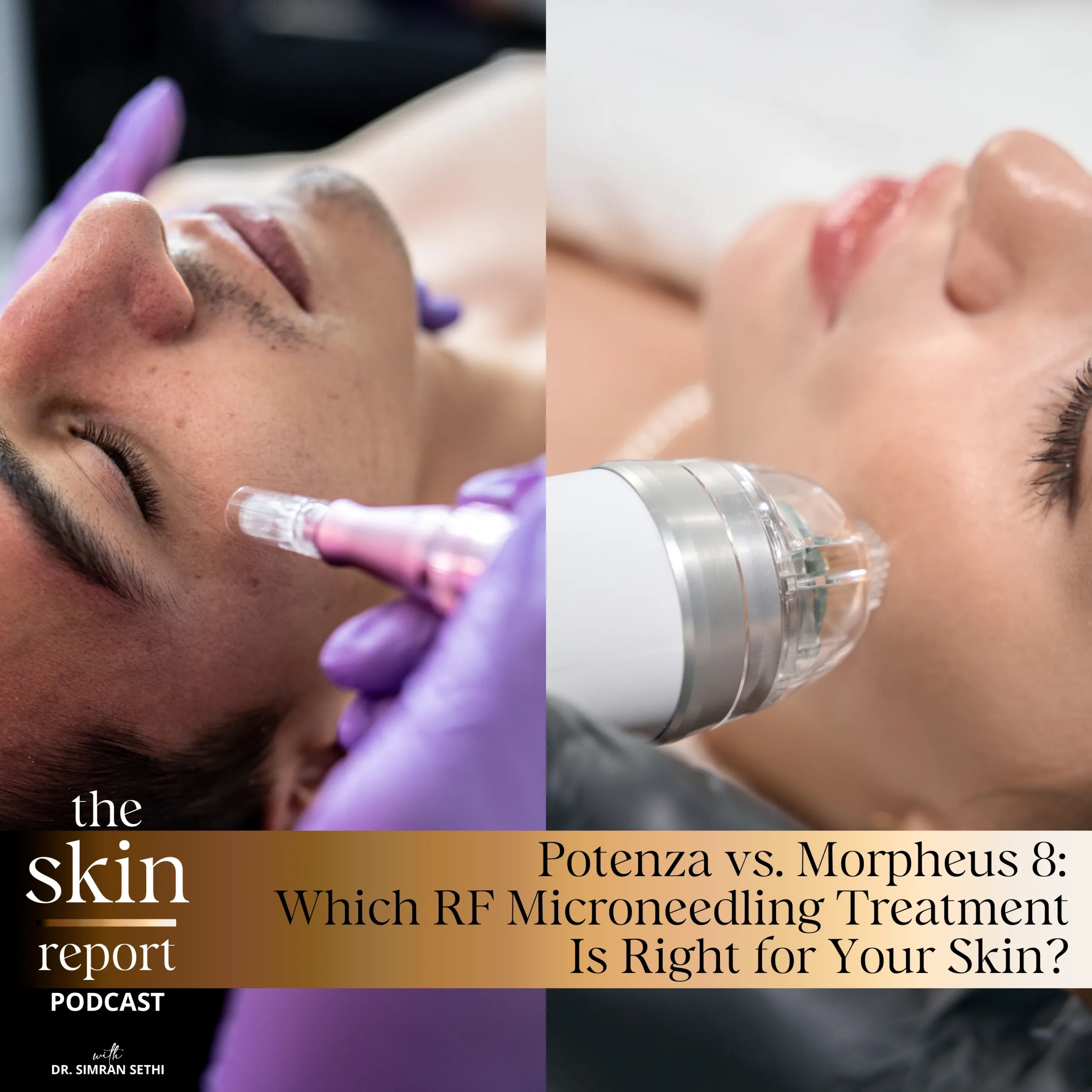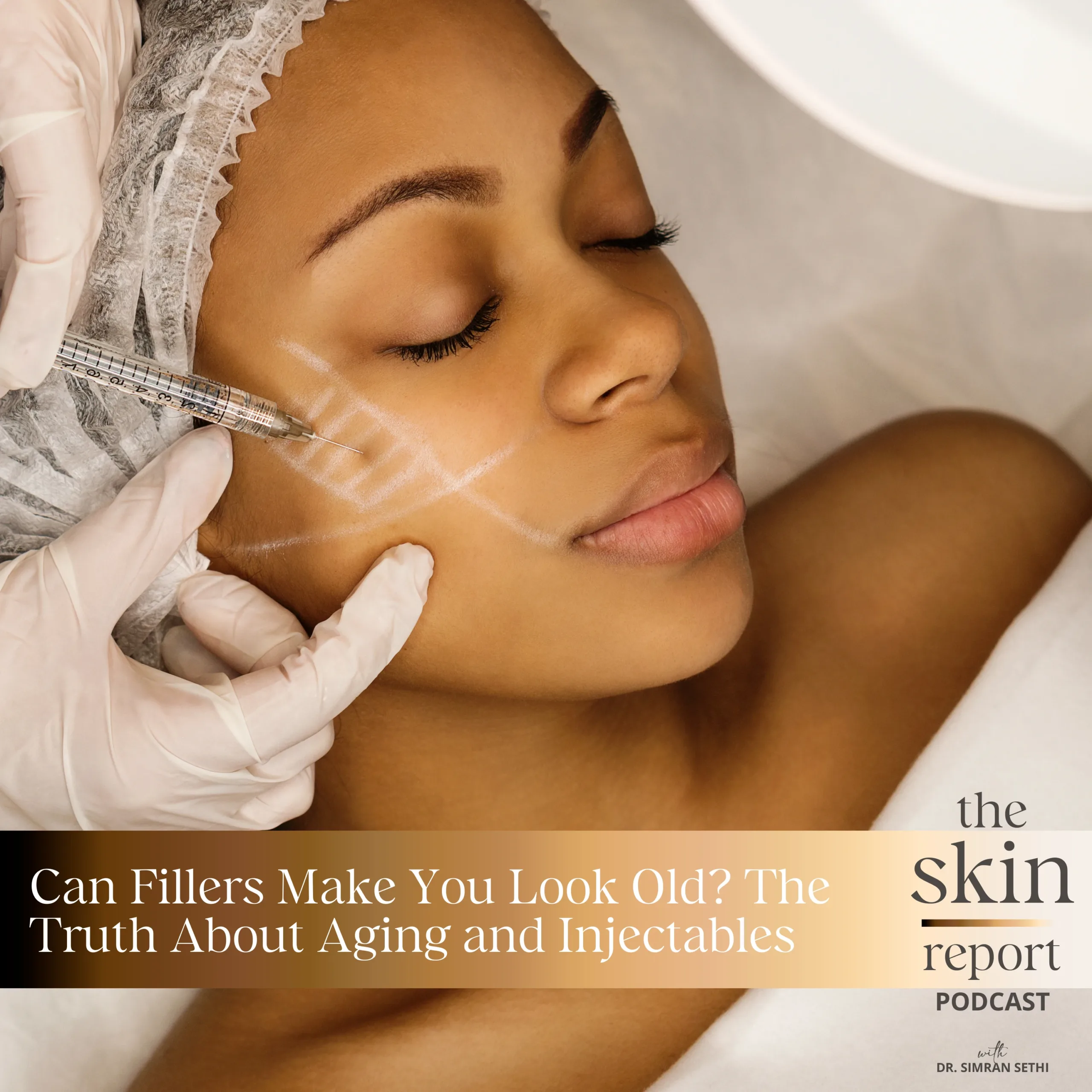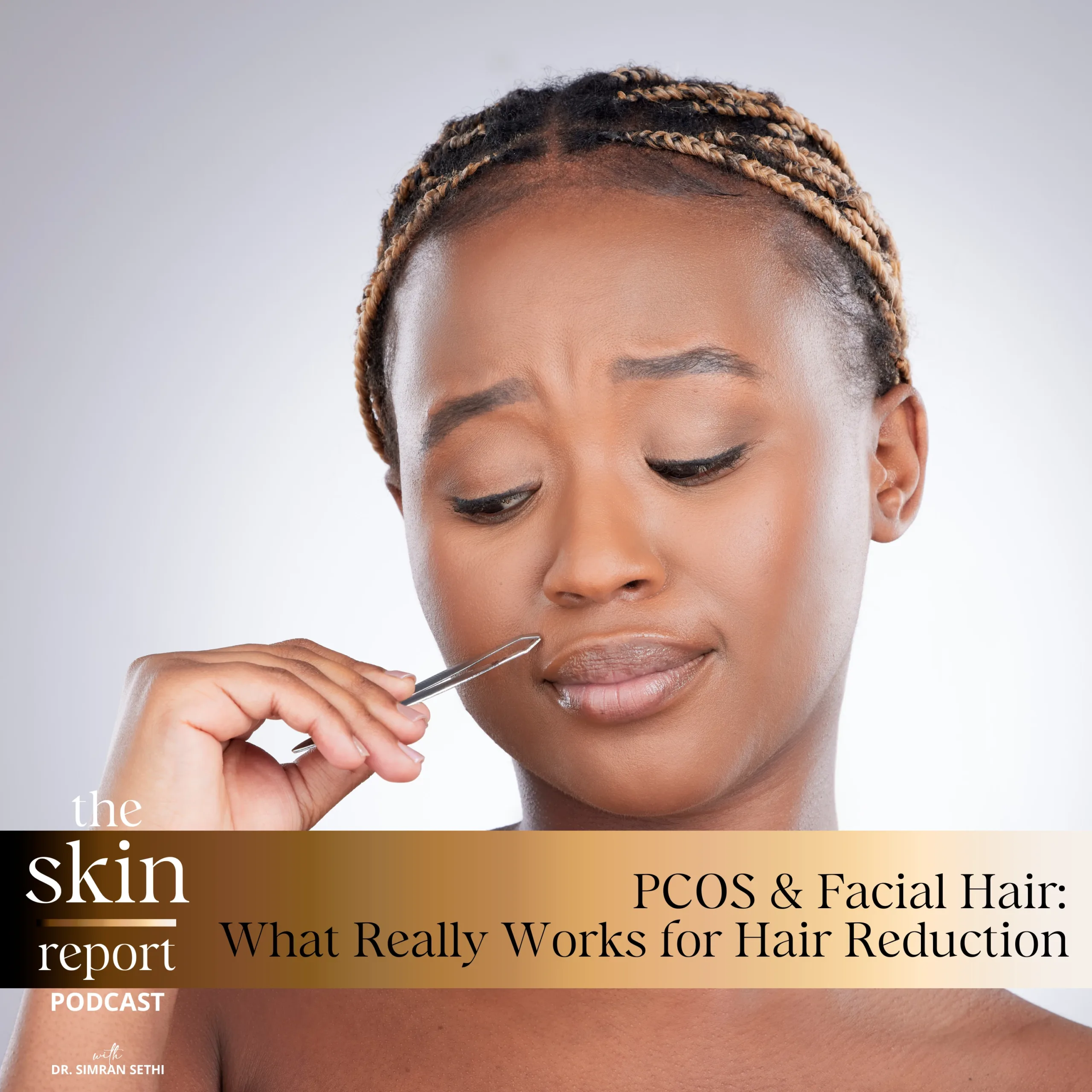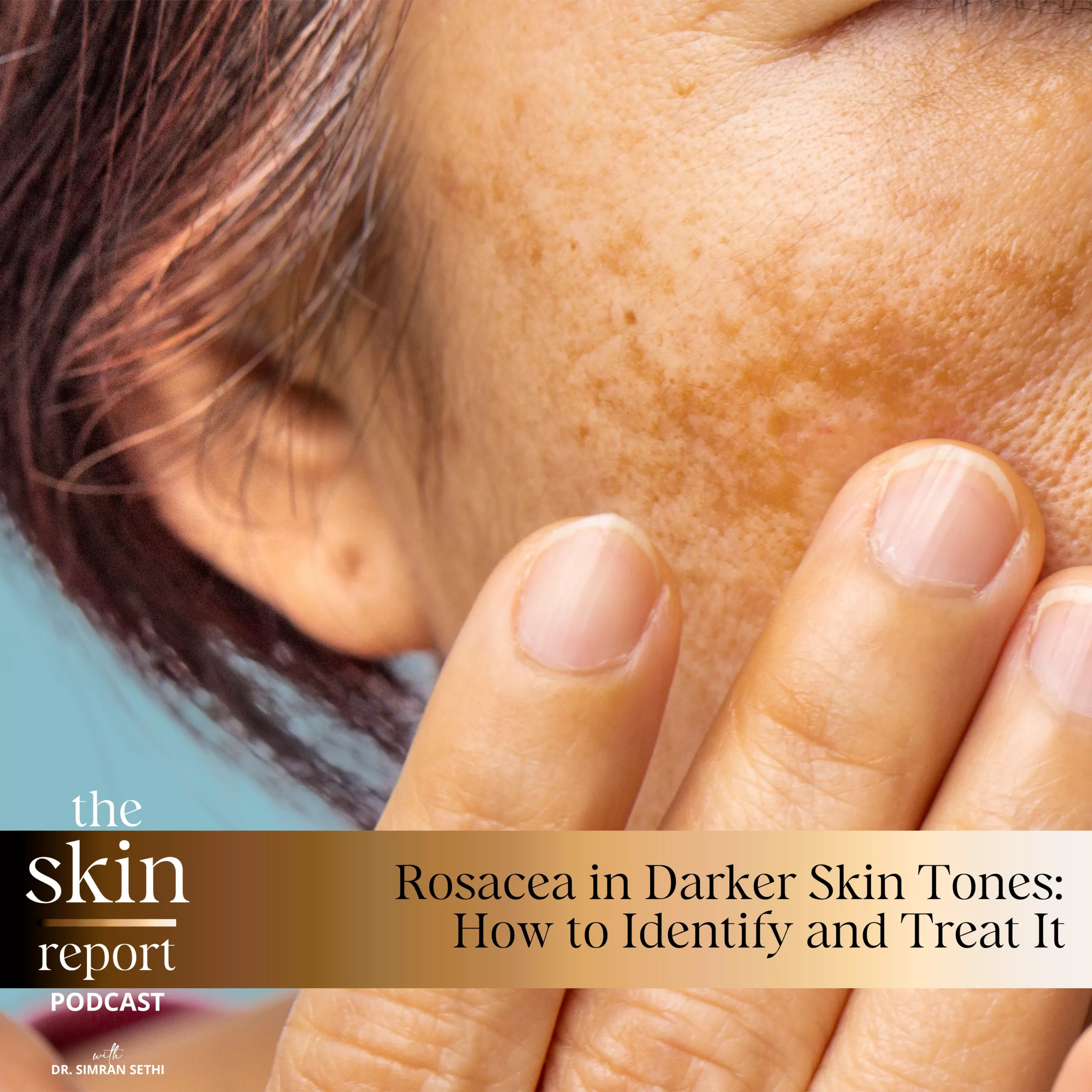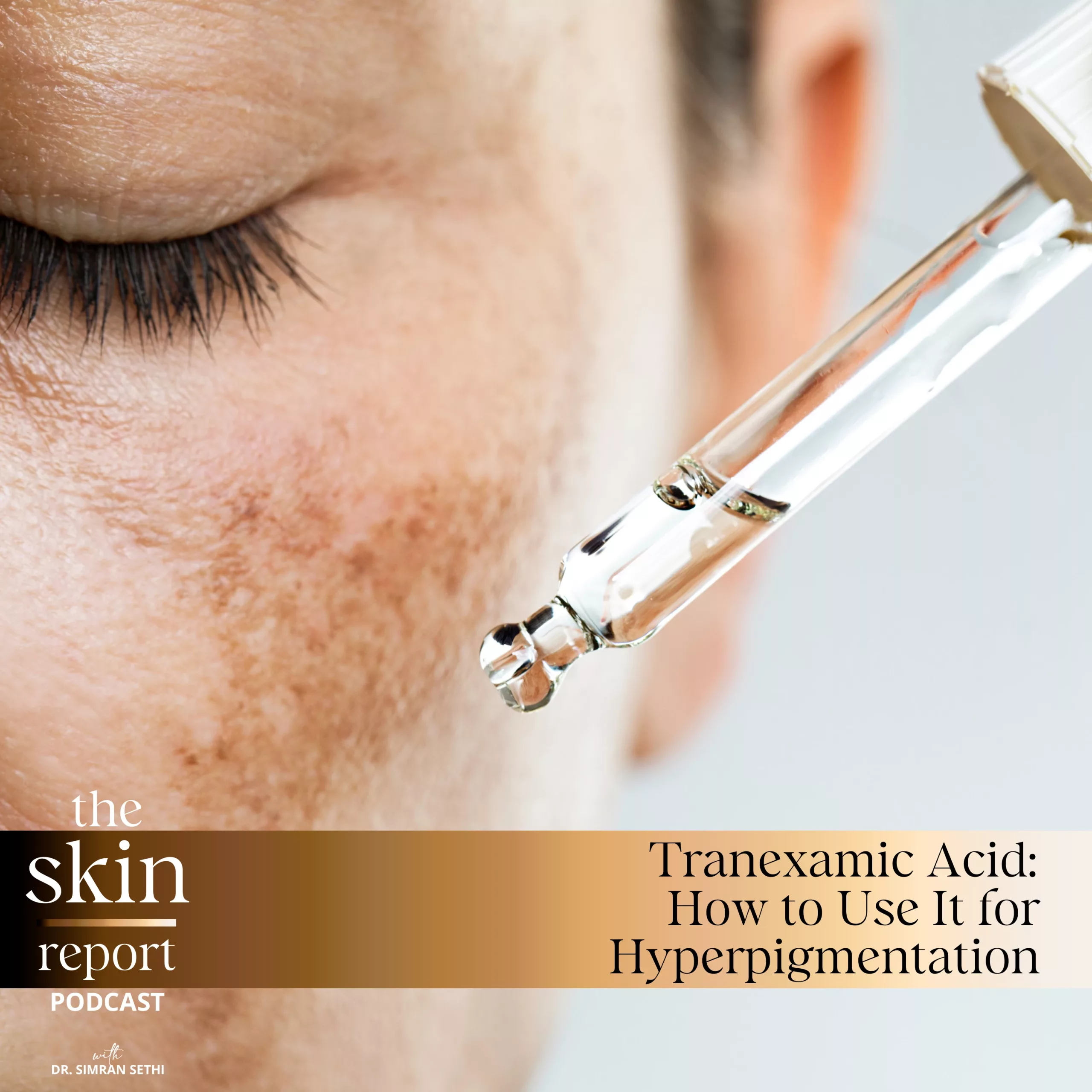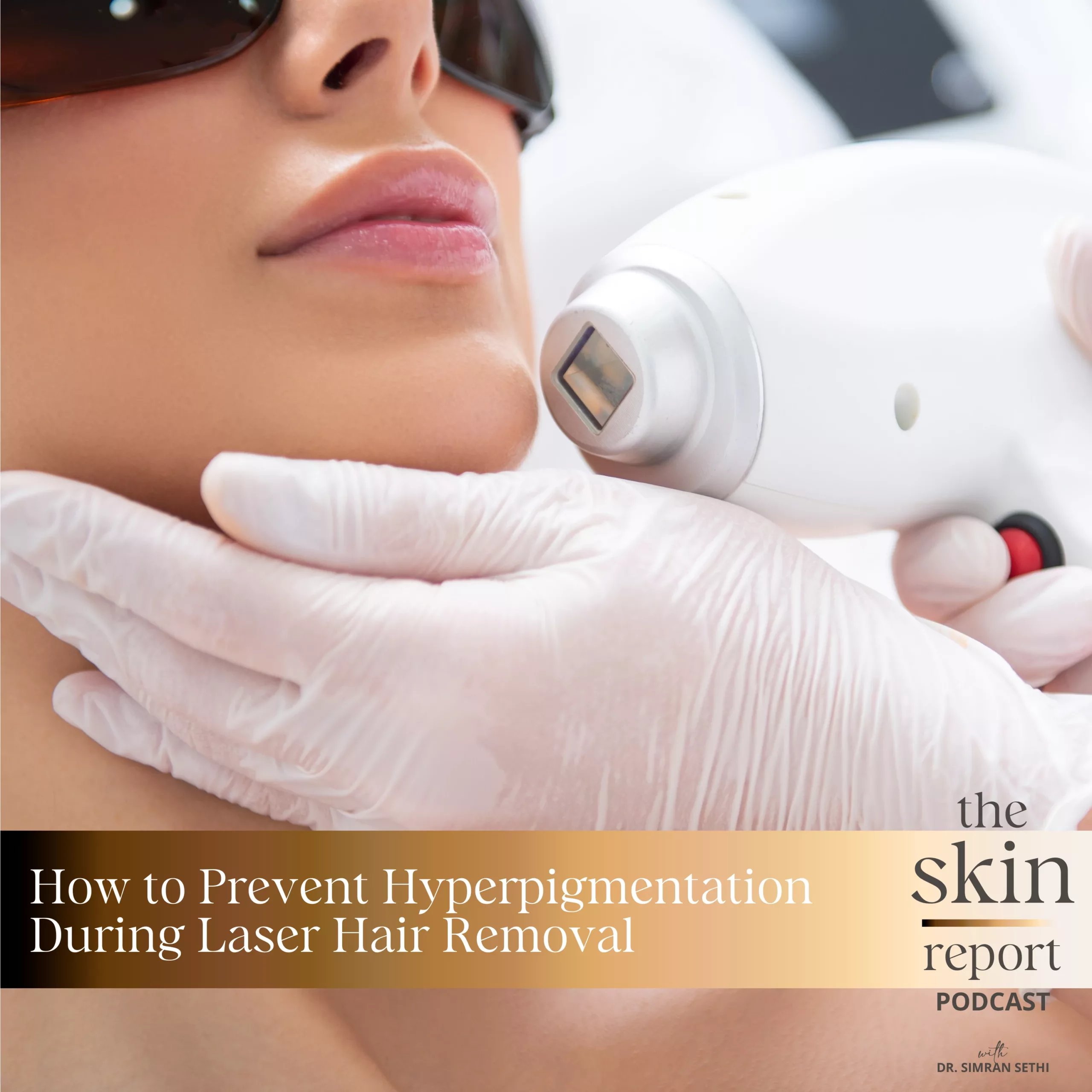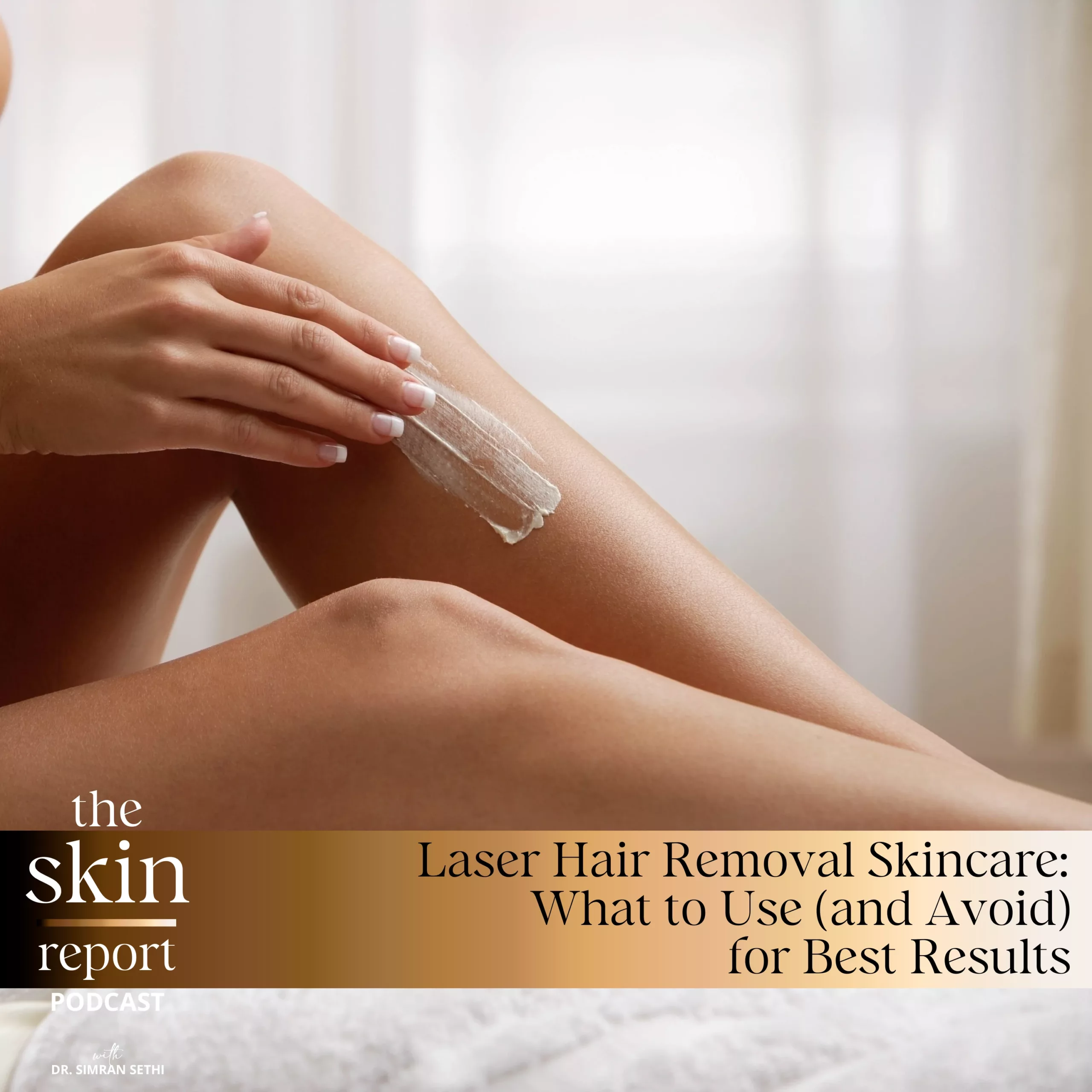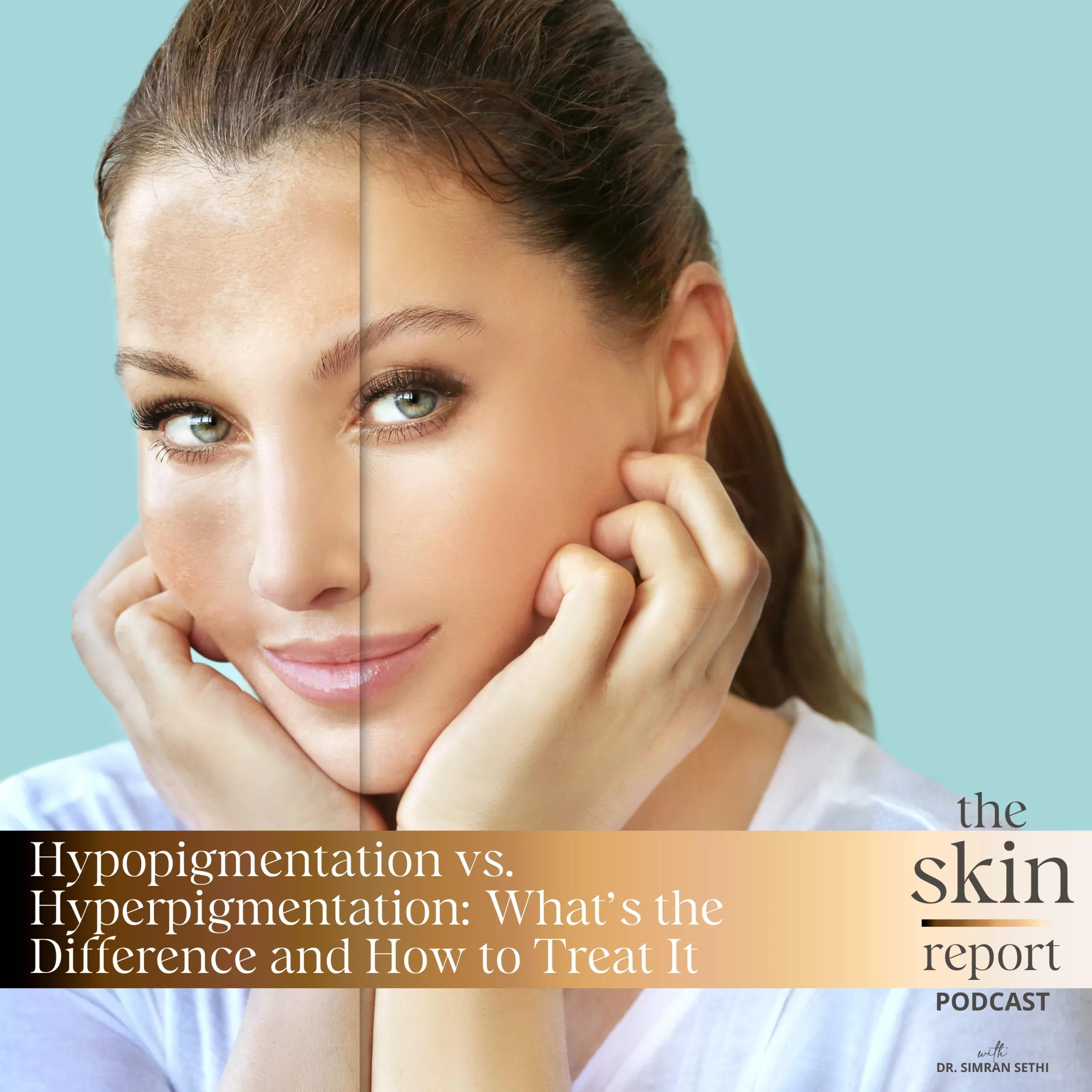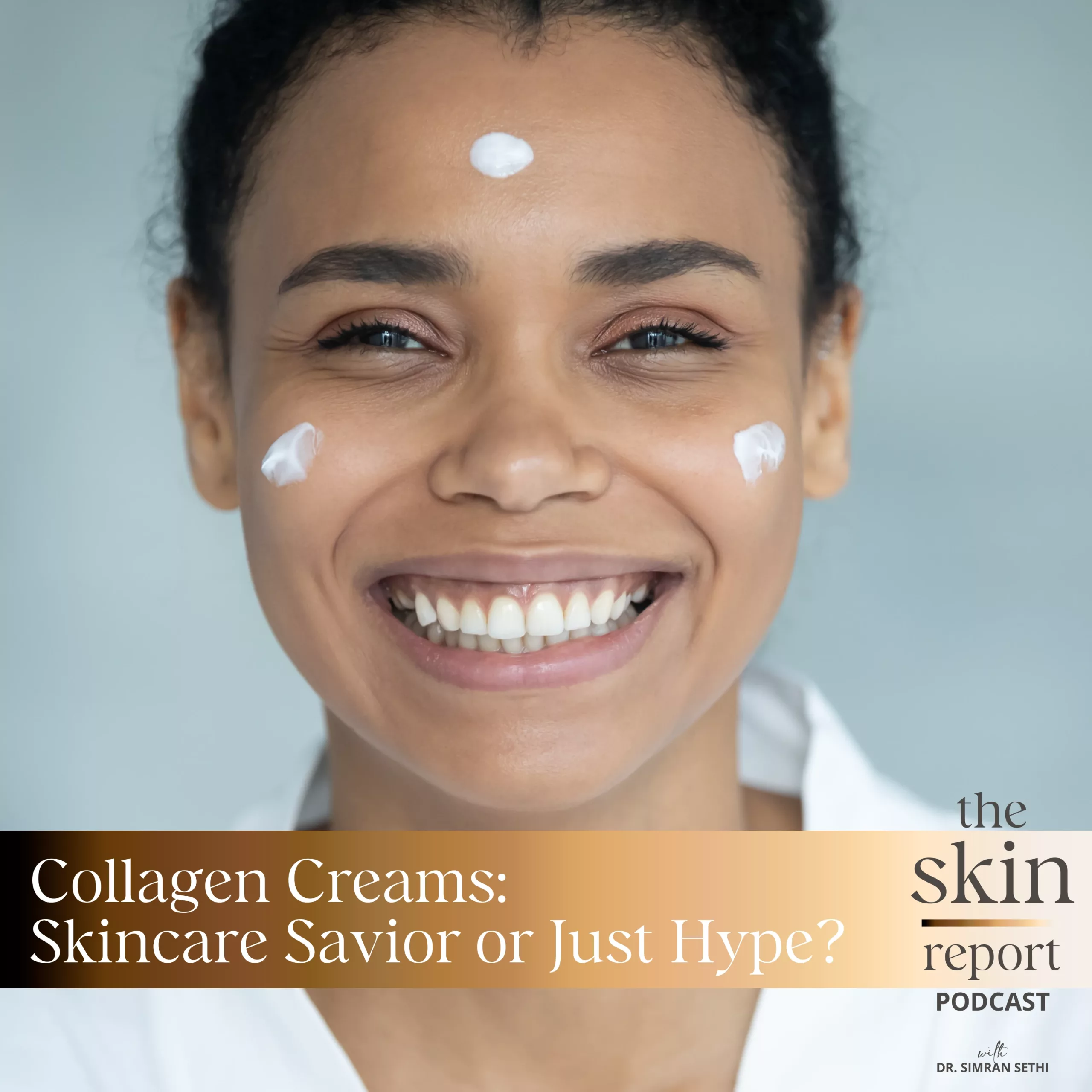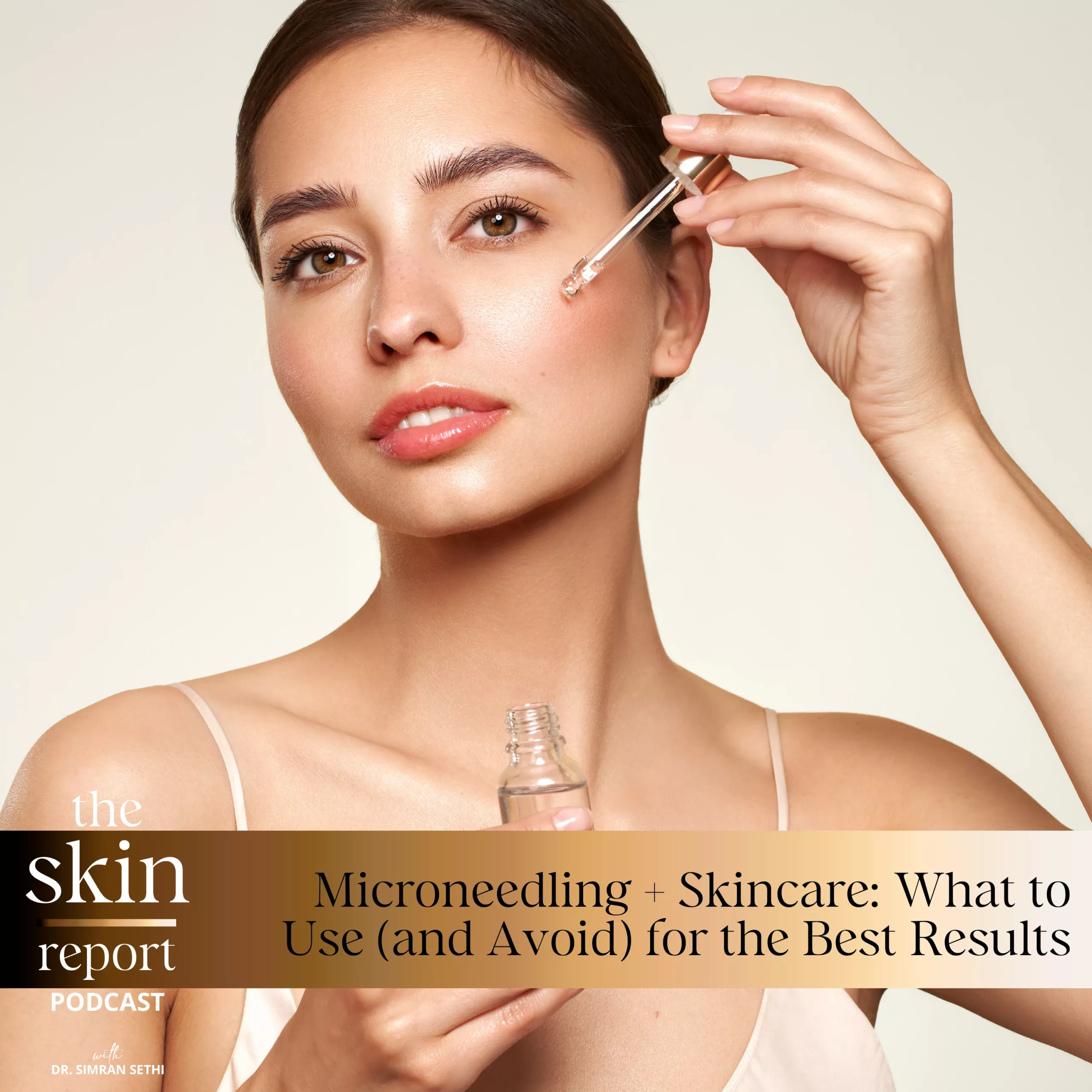As we mature, so does our skin. Our skin changes with us throughout each phase of our lives and experiences transformative effects due to our body’s natural aging process. Every age group commonly faces different skin conditions, like acne, fine lines, scars, hyperpigmentation, dryness, and changes in firmness and texture. In addressing these impacts of time and aging, there are different methods that we can use to treat and protect our skin throughout the decades.
The Skin Report is a podcast created to educate listeners on how skin care practices can improve skin health for people of every ethnicity. In this episode, host Dr. Simran Sethi talks about what skincare should look like in different stages of life. She explains the skin renewal cycle and how our skin changes as we transition from adolescence to menopause. Finally, Simran shares how we can properly treat and protect our skin with products to help us feel beautiful today, tomorrow, and in the years to come.
Follow and DM a question for Dr. Sethi to answer on The Skin Report Podcast: RenewMD
Beauty Instagram: https://www.instagram.com/renewmd_beauty/
RenewMD Beauty Medical Spas, California: https://renewmdwellness.com/
- https://renewmdwellness.com/skin-care-essentials/
- https://www.ncbi.nlm.nih.gov/pmc/articles/PMC2699641/
- https://www.jidonline.org/article/S0022-202X(19)32040-8/fulltext#relatedArticles
- https://www.skincancer.org/skin-cancer-information/skin-cancer-facts/
- https://www.health.com/beauty/skincare/sunscreen-vs-sunblock#:~:text=So%20the%20main%20difference%20in,rays%20before%20your%20skin%20can.
- https://www.aad.org/public/everyday-care/skin-care-secrets/anti-aging/skin-care-during-menopause#:~:text=Studies%20show%20that%20women’s%20skin,firmness%20and%20begins%20to%20sag.
This transcript was exported on May 13, 2022 -view latest version here.
The Skin Report Episode 3
Skin care can sometimes feel overwhelming. Whether it’s finding the right products, ingredients or treatments, there’s a lot out there, but not always for women of color. That’s why I set out to educate myself and others so that we can all feel beautiful in our skin. Hello, and welcome to the Skin Report. I’m Dr. Simran Sethi, an internal medicine doctor, mom of three and CEO and founder of RenewMD medical spas and Skin by Dr. Simran Sethi. Today I want to talk about what your skincare should look like at different stages of your life, because as we mature, so does our skin. Before we dive in, I want to mention that we will be building off of topics we discussed in episode one and two of the Skin Report. So if you haven’t already, go back and check those episodes out first.
Today, we’ll be referencing the skin renewal cycle, or the natural process of new skin cells replacing dead ones. No matter what your age or skin tone, your skin follows a natural skin renewal cycle. If you have or are currently experiencing acne, dry skin, dark spots, uneven skin texture, or just a dullness you don’t like, there’s a good chance the skin renewal cycle might play a part in the process. But before that happens, we face the trials of young skin in our late teens and early twenties, acne.
In our late teens and early twenties, we want to focus on clarifying her skin and reducing acne sebum. Sebum is an oily substance that our body’s sebaceous gland produce to moisturize and protect our skin and hair. When we produce too much sebum and our hair follicles block, we develop acne. This is nothing to be ashamed of and is quite common, even until adulthood. In fact, a study done at the University of Alabama found that just over 50% of women in their twenties experience acne. While the skin renewal cycle is going strong for this age group, with a turn over rate of two weeks, skincare should be focused on reducing any inflammation. A common green tea serum and a clarifying exfoliating glycolic acid will help to sooth skin and diminish dark spots while reducing inflammation.
Younger skin care can handle a lot, but it should always be protected from UV rays. Teenagers and young adults should start applying broad spectrum sunscreen that protects against UVA, which causes skin aging, and UVB, which causes burning. All skin types need UVA, UVB, and HEV or blue light protection. As we progress from our mid twenties to our late thirties, we develop fine lines, acne scars, and pigmentary changes. This is a great time to start using a retinol to increase skin cell turnover. At this stage, the skin renewal process has slowed down to about 28 days.
Retinol, derived from vitamin A, helps to increase skin cell turnover, collagen production, and act as an anti-inflammatory. Retinol can also reduce damage caused by HEV and UVA UVB exposure. A 2019 study done by the Journal of Investigative Dermatology discovered that individuals who use retinol visibly reduce wrinkles around their eyes and on the neck in as little as eight weeks.
So how should you use it? It’s important to pick a retinol serum that works with your skin type and sensitivity. Many people think the stronger the retinols concentration, the more effective it is. That’s not exactly true. Numerous studies have shown that using a medium concentration retinol like 0.5% will reverse signs of skin damage like pigmentation and fine lines within the first month of usage. And using this concentration of retinol for six months consistently will also increase collagen production. I keep my patients away fromstronger retinol concentrations as it leads to excess inflammation and sensitivity. In skin of color, high concentrations of retinol which are greater than 0.5% will actually increase pigmentation as the skin gets very aggravated. In summary, we can achieve beautiful and sustained results in all skin tones with a medium grade retinol like 0.5%.
As retinol can cause dryness, it’s best to start implementing it into your nighttime skin care routine just once a week in your twenties. Eventually you can work your way up to several times a week only at night, always following with a moisturizer. Retinol can make skin more sensitive to UV light, so be sure to be extra diligent with your sunscreen as always. Remember, sunscreen isn’t just for preventing aging, it also helps prevent skin cancer. The most common cancer in the United States. One in five Americans will develop skin cancer by the age of 70. So no matter what your age or skin type, sunscreen is essential.
By the time we enter our early to mid forties, many of us want to reverse fine lines and dark spots. This is when we can really utilize a powerhouse serum, retinol and dedicated eye cream or eye gel. When it comes to eye cream, we want to gently tap it into the skin in a 360 degree fashion under and around the eyes and the eyelids. Once applied, allow the eye gel or cream to sink in before applying your next product. When looking for an eye gel or cream, it is important to consider the ingredients in your product. Products containing retinol in the eye cream can only be used at night, which means you will need an additional eye product for daytime usage. I really like eye gels that contain antioxidants like vitamin C or ashwagandha that’ll fight oxidative damage and effects of blue light, which our eyes geta lot of. But at the same time, gels which also allow to easily absorb into the skin around the eyes without making the skin look greasy.
Next, as always, continuing the conversation of sun protection. It’s important to start using sunblock in our fortiesas opposed to sunscreen. Yes, sunblock is different than sunscreen. Sunblock does exactly what its name suggests, blocking damaging rays from our environment by forming a physical protective shield on the skin. Sunblock starts protecting the skin the minute it’s applied so that you do not have to wait for any period of time before your skin protection starts. Sunscreens on the other hand, consist of chemicals that first have to be absorbed into the skin and in about 30 minutes will start protecting the skin against UV rays. This means that you have to wait a sufficient amount of time before getting any sun protection and that the level of protection will be variable based on how much is actually absorbed by the skin.
I recommend using a physical barrier sunblock that contains zinc or titanium oxide with a sun protection factor of at least 30. Additionally, it’s imperative to have an annual full body skin check with a board certified dermatologist as you get older. If you have a history of skin damage or skin cancer in the family, you may want to visit a dermatologist sooner than this. The earlier you catch something the better. According to the Skin Cancer Foundation, when detected early, the five year survival rate for melanoma is 99%.
Once you hit your fifties and beyond, many women experience menopause, which really impacts their skin. In looking at many studies, the American Academy of Dermatology Association discovered that in the first five years of menopause, women’s skin loses about 30% of its collagen. Over the next 20 years, women lose about 2% of their collagen every year. With this decrease in collagen, skin begins to sag and lose its firmness. Skin will also feel drier, becoming more vulnerable to micro tears that increase pigmentation and sensitivity to skin products. To combat this, women should prioritize lipid rich serums. Lipids or fats are natural fats for the skin that help retain moisture, heal from scrapes and prevent sun damage.
As the skin becomes drier and more vulnerable, lipid rich serums will help nourish and rejuvenate the skin barrier. They will also prevent greater melanocyte activity, which causes dark spots and hyperpigmentation, which becomes very common and problematic as skin ages. By this age, the skin renewal process takes about 45 to 60 days. Compare this to the two week cycle in our teenage years. Therefore, the consistent and continual application of retinol can truly help to slow the elongation of the process. And as always, wear sunblock every day, even on cloudy days and even in the winter.
The hard truth is that we all age and we can embrace it. With consistent use of ingredients such as retinol, moisturizer and sun protection, we can feel happy, healthy, and beautiful in our skin no matter what our age. If you’d like to learn more about how to treat your skin type or are simply curious about aesthetic procedures, please subscribe to the Skin Report so that you know when we release new episodes. Next week, we will be discussing adult acne. It’s more common than you think. If you have a skincare question, please DM me at renewmd_beauty and I will answer it in our next episode. Thanks for listening and until next time, love the skin you’re in and celebrate your beauty.
Transcript by Rev.com

